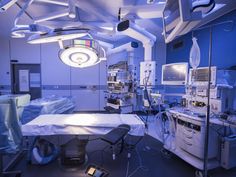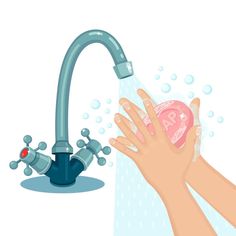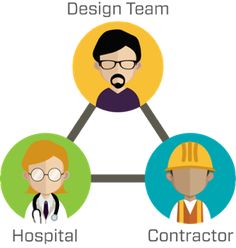
Table of Contents
Introduction
Hospitals are bastions of healing, yet they can also harbor a hidden enemy: Hospital-Acquired Infections (HAIs). Unlike community-acquired infections (CAIs) contracted daily, HAIs develop during a patient’s hospital stay, often due to weakened immune systems, invasive procedures, and the concentration of pathogens within healthcare settings.
The Alarming Scope of HAIs
The prevalence of HAIs is a cause for serious concern. Studies estimate that 1.7 million patients develop HAIs annually, making it a global public health challenge. These infections can range from mild to life-threatening, with complications like pneumonia, bloodstream infections, and even death.
The Ripple Effect: Economic Burden of HAIs
HAIs are not just a human tragedy but also a significant economic burden. Extended hospital stays due to HAIs translate to substantial costs. The additional treatment required for these infections and potential lawsuits creates a financial strain on healthcare systems. Effective preventive measures can significantly reduce these costs, freeing up resources for better patient care.
Beyond Statistics: The Human Cost of HAIs
HAIs are not merely statistics on a page. They exact a heavy human toll. Patients with HAIs experience extended periods of pain and suffering. These infections can lead to prolonged hospital stays, delayed recoveries, and even permanent disabilities. In the worst-case scenario, HAIs can increase the risk of mortality, adding another layer of tragedy.
Broken Trust and Reputation: The Domino Effect of HAIs
The consequences of HAIs extend beyond the individual patient. Outbreaks of HAIs can erode public trust in hospitals. Negative publicity and a reputation for high HAI rates can deter patients from seeking care at those facilities. This decline in patient volume can further strain hospital finances, creating a vicious cycle.
Healthcare Workers on the Front Lines
While the primary focus is on patient well-being, it’s important to acknowledge the impact of HAIs on healthcare workers. Witnessing patients suffer from HAIs can cause stress, frustration, and even moral distress for the caregivers.
Unveiling the Routes of Transmission: How HAIs Spread
HAIs are like invisible threats lurking in healthcare settings. They can spread through various routes, making vigilance crucial.
- Direct Contact: Direct contact with infected patients or bodily fluids is a standard transmission mode. This includes touching contaminated wounds or secretions.
- Indirect Contact: Indirect contact with contaminated surfaces or equipment can also spread HAIs. This highlights the importance of proper cleaning and disinfection procedures.
- Airborne Transmission: Certain pathogens can be transmitted through the air, particularly in cases like tuberculosis or measles. Proper ventilation and isolation measures become essential in such scenarios.
The Rise of Superbugs: The Challenge of Multidrug-Resistant Organisms (MDROs)
The overuse of antibiotics has led to the emergence of a formidable foe – multidrug-resistant organisms (MDROs). These bacteria have developed resistance to multiple antibiotics, making HAIs caused by MDROs more difficult to treat. Effective infection control practices are vital to combatting this growing threat.
Vulnerable Populations: Who’s Most at Risk?
Patients with compromised immune systems are more susceptible to HAIs. This includes individuals undergoing surgery, those battling chronic illnesses, and the elderly whose immune systems weaken with age. Identifying these vulnerable populations allows healthcare professionals to implement additional precautions to minimize their risk of infection.
II. Core Strategies for Preventing Hospital-Acquired Infections (HAIs)

A. Hand Hygiene: The Unbreakable Chain in Infection Control
Hand hygiene stands as the cornerstone of infection prevention in healthcare settings. It’s a simple yet powerful act that significantly reduces the spread of HAIs. The World Health Organization (WHO) recommends a multi-modal approach to hand hygiene, emphasizing proper handwashing with soap and water for specific situations.
The WHO guidelines outline a six-step handwashing technique, ensuring thorough cleaning of all hand surfaces. This includes palms, backs, fingertips, between fingers, and thumbs. Friction is key to dislodge pathogens, so vigorous rubbing for at least 20 seconds is essential.
While hand washing remains the gold standard, alcohol-based hand sanitizers offer a convenient and effective alternative when soap and water are not readily available. Look for sanitizers with at least 60% alcohol content for optimal effectiveness. However, hand sanitizers are not a substitute for washing hands when visibly soiled.
Promoting Hand Hygiene Compliance:
Maintaining high hand hygiene compliance among healthcare staff is crucial. Hospitals can implement various strategies to achieve this, including:
- Regular education and training on proper hand hygiene techniques.
- Readily available handwashing stations with soap and water throughout the facility.
- Placement of alcohol-based hand sanitizers at key locations, including patient rooms and entry/exit points.
- Visual reminders like posters and electronic displays promoting hand hygiene.
- Peer-to-peer accountability programs and performance feedback.
By emphasizing the importance of hand hygiene and making it accessible, healthcare facilities can create a culture of hand hygiene compliance, significantly reducing the risk of HAIs.
B. Personal Protective Equipment (PPE): A Barrier Against Infection
Personal Protective Equipment (PPE) is a physical barrier for healthcare workers, protecting them from contact with infectious agents. The type of PPE required varies depending on the procedure being performed and the patient’s condition.
- Gloves: Gloves are essential to prevent hand contamination during procedures involving bodily fluids or contact with potentially infectious surfaces.
- Gowns: Gowns protect clothing and exposed skin from splashes or sprays with high infection risk during procedures.
- Masks: Masks protect healthcare workers from inhaling airborne pathogens, which are particularly relevant for procedures that generate aerosols or for patients with respiratory infections.
Proper donning and doffing of PPE are crucial to prevent contamination. Following established protocols ensures healthcare workers put on and take off PPE without compromising their safety. Finally, the selection and disposal of PPE must be by hospital guidelines.
C. Environmental Cleaning and Disinfection: Creating a Clean Canvas
Maintaining a clean and disinfected environment in healthcare settings is vital in preventing HAIs. Hospitals implement comprehensive cleaning and disinfection protocols to minimize the presence of pathogens on surfaces.
The type of cleaning and disinfection protocol used depends on the surface type and the contamination level. For example, high-touch surfaces like doorknobs and bedside tables require frequent disinfection with appropriate cleaning agents. Specific protocols for cleaning and disinfection may be necessary for heavily soiled areas or spills involving bodily fluids.
Antimicrobial cleaning agents can be helpful tools in the fight against HAIs. These agents possess properties that kill or inhibit the growth of microorganisms on surfaces. However, it’s important to use them correctly and rotate different types to prevent the emergence of resistant pathogens.
Antibiotic Stewardship: Wielding Antibiotics Wisely
Antibiotic stewardship is a critical concept in the fight against HAIs. It emphasizes the responsible use of antibiotics to preserve their effectiveness for future generations. Overuse and misuse of antibiotics have led to the emergence of antibiotic-resistant bacteria, rendering these life-saving drugs ineffective against certain infections.
Hospitals implement antibiotic stewardship programs to ensure antibiotics are prescribed only when necessary and for the shortest effective duration. These programs:
Promote diagnostic testing to identify the specific cause of infection before prescribing antibiotics.
Develop guidelines for the appropriate selection and dosage of antibiotics based on the type of infection.
Encourage communication between doctors and pharmacists to optimize antibiotic use.
Monitor antibiotic prescribing patterns and track the emergence of antibiotic-resistant bacteria.
III. Additional Preventive Measures for Hospital-Acquired Infections (HAIs)

A. Patient Screening and Isolation: Mitigating Risks Before They Spread
Early detection is key in preventing HAIs. Patients are screened for potential infections upon admission based on symptoms, travel history, and recent healthcare experiences. This allows healthcare workers to identify high-risk individuals and implement appropriate precautions.
For patients with confirmed or suspected infections, isolation precautions become crucial. These precautions aim to contain the spread of pathogens and protect other patients and healthcare workers. Different types of isolation exist, each with specific protocols:
Contact isolation: Used for infections spread through direct contact, requiring dedicated rooms and personal protective equipment.
Airborne isolation: Implemented for infections transmitted through airborne droplets, with negative pressure rooms and respirators for healthcare workers.
Droplet isolation: Similar to airborne isolation, but with a larger droplet size, requiring masks and dedicated rooms.
By implementing appropriate screening and isolation measures, healthcare facilities can effectively mitigate the risk of HAIs spreading.
B. Safe Injection Practices: A Sharper Focus on Safety
Safe injection practices are essential to prevent bloodborne infections like Hepatitis B and C, and HIV. Healthcare facilities strictly adhere to guidelines promoting:
Single-use needles and syringes: This eliminates the risk of contamination from reusing needles.
Proper disposal of sharps: Sharps containers are readily available to safely dispose of used needles and syringes, minimizing the risk of needlestick injuries.
Minimizing unnecessary injections: Alternative medication administration routes like oral or topical applications are preferred to reduce the risk of sharps injuries.
By emphasizing safe injection practices, healthcare providers can significantly reduce the risk of hospital bloodborne infection transmission.
C. Catheter and Device Management: Keeping It Clean from the Start
Catheters and other medical devices inserted into the body can create a pathway for infection if not managed properly. Healthcare facilities implement protocols for:
Aseptic technique: This sterile technique minimizes contamination during device insertion and removal, reducing the risk of infection.
Proper care and maintenance: Regular cleaning and disinfection of catheters and devices according to established guidelines are crucial.
Timely removal: Devices should be removed as soon as they are no longer medically necessary to minimize the risk of infection associated with prolonged use.
IV. The Role of Technology in HAI Prevention

A. Electronic Health Records (EHRs): A Double-Edged Sword
Electronic Health Records (EHRs) hold the potential for improved HAI prevention. They can be used to:
- Track HAI Rates and Identify Outbreaks: By analyzing data on infections, diagnoses, and procedures, healthcare facilities can identify trends and potential outbreaks of HAIs earlier.
- Promote Preventive Measures: EHRs can be programmed to deliver electronic reminders to healthcare workers regarding hand hygiene, appropriate antibiotic use, and other prevention protocols at critical junctures.
However, EHR adoption also presents challenges. Only complete or accurate data entry can ensure effective surveillance. Additionally, relying solely on EHRs may divert attention from direct patient observation and meticulous infection control practices.
B. Robotics and Automation: A New Frontier
Robotics and automation are emerging technologies with potential benefits in HAI prevention. For example, automated cleaning robots could be used to disinfect high-touch surfaces more frequently and consistently. However, these technologies are not a silver bullet. Ensuring proper disinfection and maintenance of automated equipment remains crucial.
Furthermore, ethical considerations surround automation in healthcare. Replacing human interaction with robots in patient care raises concerns about patient well-being and the potential for impersonal care.
The role of technology in HAI prevention lies in its ability to complement, not replace, established infection control practices.
V. Conclusion

A. A Collective Effort: The Importance of HAI Prevention
Preventing Hospital-Acquired Infections (HAIs) is a critical endeavor in healthcare. HAIs are a heavy human cost, causing patient suffering, extending hospital stays, and even leading to mortality. The economic burden on healthcare systems is significant as well.
This article has explored various strategies to combat HAIs. Hand hygiene, the cornerstone of infection control, remains paramount. Proper use of personal protective equipment, meticulous environmental cleaning, and responsible antibiotic stewardship are crucial additional measures. Early detection through patient screening and isolation precautions are vital in containing outbreaks. Safe injection practices and proper management of catheters and medical devices further reduce the risk of infection.
The fight against HAIs requires a multi-pronged approach. Healthcare professionals must adhere to strict infection control protocols. Administrators need to prioritize resources and invest in technology and training programs. Patients also play a role by being informed about infection control practices and communicating openly with healthcare providers.
B. The Future of Infection Prevention: A Continuous Battle
The battle against HAIs is ongoing. Emerging technologies like robotics and automation offer promising avenues for improved disinfection and surveillance. Continuous research and development are crucial in identifying new strategies and therapeutic approaches to combat HAIs.
The fight to prevent HAIs is a collective responsibility. By working together, healthcare professionals, administrators, and patients can create a safer environment for everyone, minimizing the risk of these devastating infections and ensuring optimal patient outcomes.
Are You a Nurse Ready to Make a Difference Through Research?
Hospital-acquired infections (HAIs) are a significant threat to patient safety, costing lives and billions of dollars annually. As a nurse on the frontlines of healthcare, you witness the impact of HAIs firsthand. Do you have the research ideas and the passion to make a difference?
We can help.
Our team of expert nursing Ph.D. writers specializes in guiding nurses through the challenging world of dissertation writing. We understand the unique demands of your profession and the importance of clear, impactful research that translates into real-world improvements for patients.





